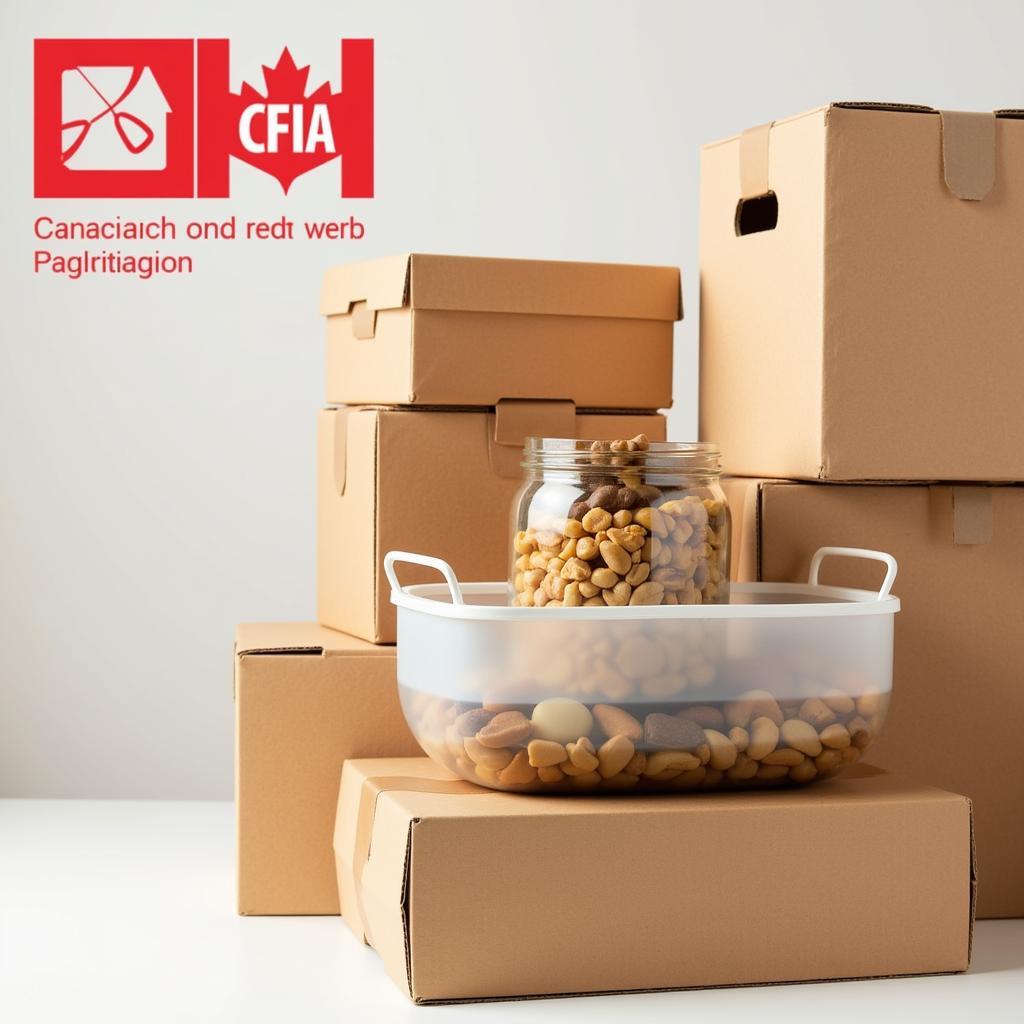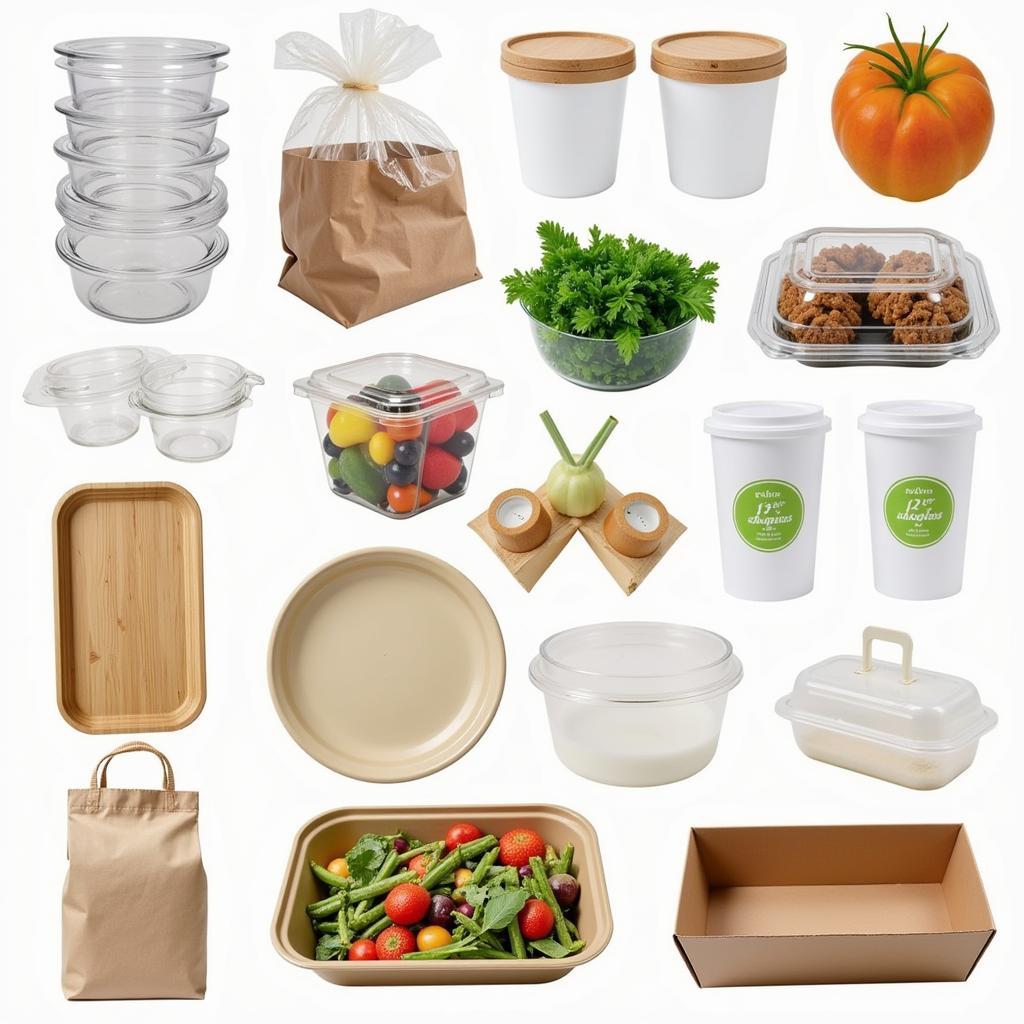Choosing the right food packaging is critical for any business in Canada’s competitive food industry. Not only does it protect your product during transport and storage, but it also plays a crucial role in branding, regulatory compliance, and consumer perception. With the rising demand for sustainable practices, understanding the ins and outs of food packaging in Canada is more important than ever.
This comprehensive guide will walk you through everything you need to know about food packaging in Canada, from materials and regulations to innovative trends and sustainable choices.
Navigating the Canadian Food Packaging Landscape
 Canadian Food Packaging Regulations
Canadian Food Packaging Regulations
The Canadian food packaging industry is governed by stringent regulations enforced by the Canadian Food Inspection Agency (CFIA). These regulations are in place to ensure the safety and quality of food products for consumers. Key aspects include:
- Materials: Food packaging materials must be safe and not leach harmful substances into food.
- Labeling: Labels must comply with CFIA regulations, including ingredient lists, nutritional information, and allergen declarations.
- Food Contact: Packaging materials must not negatively affect the taste, odor, or safety of the food they contain.
Exploring Food Packaging Materials
From protecting perishable goods to extending shelf life, different food packaging materials offer unique benefits:
- Plastic: Lightweight, versatile, and cost-effective, plastic remains a popular choice. However, concerns about its environmental impact have led to a surge in biodegradable and compostable alternatives.
- Paper and Cardboard: Widely used for dry goods, paper and cardboard are recyclable and biodegradable options.
- Metal: Durable and impermeable, metal packaging, such as aluminum cans and tin containers, is ideal for long-term storage and preserving product freshness.
- Glass: Inert and reusable, glass is a premium packaging option that preserves the flavor and quality of food products.
Sustainability Takes Center Stage
 Sustainable Food Packaging Options
Sustainable Food Packaging Options
With increasing environmental awareness, sustainable food packaging solutions are gaining traction. Consumers are actively seeking out brands that prioritize eco-friendly practices. Here are some sustainable options to consider:
- Bioplastics: Made from renewable resources like corn starch, bioplastics offer a compostable alternative to traditional plastics.
- Edible Films and Coatings: Innovations in edible films and coatings made from natural ingredients provide a revolutionary solution to reduce food waste and eliminate packaging entirely.
- Reusable Packaging: From refillable containers to deposit-return systems, reusable packaging options are gaining popularity as a way to minimize single-use packaging waste.
Embracing Innovation in Food Packaging
The food packaging industry is constantly evolving, driven by technological advancements and changing consumer preferences. Here are some notable innovations shaping the future of food packaging:
- Active Packaging: Designed to interact with the food or the environment inside the package, active packaging helps extend shelf life, enhance safety, and improve quality.
- Intelligent Packaging: Embedded with sensors and indicators, intelligent packaging provides real-time information about the product’s freshness, temperature, and potential tampering.
- Personalized Packaging: Digital printing technologies allow for customized packaging designs, enabling brands to connect with consumers on a personal level and enhance brand loyalty.
Making Informed Choices for Your Food Business
Selecting the right food packaging is a crucial decision for any food business. Consider these factors:
- Product Requirements: The type of food product, its shelf life, and storage needs will dictate the most suitable packaging material.
- Target Market: Understanding your target audience and their preferences is essential when considering packaging design and sustainability aspects.
- Budget: Evaluate the cost-effectiveness of different packaging materials and options, keeping in mind the long-term implications for your business.
Conclusion
Navigating the complexities of food packaging in Canada requires a thorough understanding of regulations, materials, and emerging trends. By making informed choices and prioritizing sustainability, you can safeguard your products, elevate your brand, and contribute to a greener future. Remember, your packaging speaks volumes about your commitment to quality, innovation, and environmental responsibility.
Frequently Asked Questions
1. What are the labeling requirements for food packaging in Canada?
All food labels in Canada must meet specific requirements outlined by the CFIA, including bilingual labeling (English and French), a list of ingredients, nutritional information, and allergen declarations.
2. What is the difference between biodegradable and compostable packaging?
Biodegradable packaging breaks down into natural elements over time, while compostable packaging breaks down specifically in a compost environment, leaving behind no toxic residues.
3. Where can I find sustainable food packaging suppliers in Canada?
Several online directories and industry associations, such as Packaging Consortium and Food & Beverage Canada, provide lists of reputable packaging suppliers in Canada.
4. Are there any regulations regarding the use of recycled content in food packaging?
While there are no specific regulations mandating recycled content in food packaging, many provinces have extended producer responsibility (EPR) programs that encourage manufacturers to use recycled materials.
5. What are the latest trends in food packaging design?
Minimalism, transparency, and storytelling through packaging design are some of the latest trends shaping the industry, reflecting consumer demand for authenticity and sustainability.
For more information on food processing in Canada, explore these related resources on our website:
Need further assistance with food packaging solutions in Canada? Contact our team at Mina Cones Food today! Call us at 02437655121, email us at [email protected], or visit our office at 3PGH+8R9, ĐT70A, thôn Trung, Bắc Từ Liêm, Hà Nội, Việt Nam. Our dedicated customer support team is available 24/7 to answer your questions and provide personalized guidance.